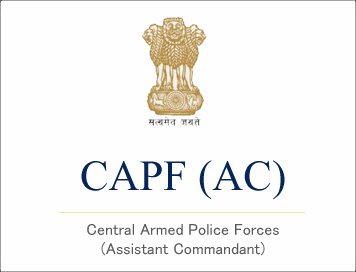केंद्रीय सशस्त्र पुलिस बल (CAPF AC) Exam Hindi Model Questions : SET-6
1. 1993 के प्रान्तीय विधान सभा चुनावों के उपरान्त मुस्लिम लीग की राजनीति के सम्बन्ध् में निम्नलिखित में से कौन-सा कथन सही नहीं है?
a मुस्लिम लीग द्वारा भारतीय राष्ट्रीय कांग्रेस के साथ गठजोड़ मन्त्रिामण्डल बनाने की इच्छा थी
b जिन्ना ने कांग्रेस को ‘‘शक्ति के मद में चूर’ होने की आलोचना की
c मुस्लिम लीग ने कांग्रेस-शासित प्रांतों में मुसलमानों के प्रति दुर्व्यवहार पर रिपोर्ट तैयार करायी
d बंगाल, सिन्ध् और उत्तर-पश्चिम सीमान्त, प्रान्त में मुस्लिम लीग मंत्रिमण्डलों ने त्यागपत्र दे दिया
2. निम्नलिखित पर विचार कीजिए
1. अमृत बाजार पत्रिका 1868 में प्रारम्भ हुई थी।
2. अरूणा आसपफ अली कांग्रेस महिला स्वयंसेवक कोर की संस्थापक थीं
3. बीना दास ने दीक्षांत-समारोह में अपनी उपाधि लेते समय गवर्नर पर गोली चला दी थी
4. लतिका धेष ने चटगांव शस्त्रागार पर होने वाले धावे में भाग लिया था।
उपर्युक्त कथनों में से कौन से सही है ?
a 1, 2 और 4
b 1, 3 और 4
c केवल 1 और 3
d केवल 2 और 4
3. सूची I को सूची II से सुमेलित कीजिए और सूचियों के नीचे दिए गए कूट का प्रयोग कर सही उत्तर चुनिए
सूची I सूची II
संस्थापकद्ध महिलाओं के राजनैतिक संगठनद्ध
। लतिका घोष 1. राष्ट्रीय स्त्राी संघ
II सरोजनी नायडू 2. महिला राष्ट्रीय संघ
III कृष्णाबाई राउ 3. नारी सत्याग्रह समिति
IV उर्मिला देवी 4. देश सेविका संघ
कूट :
। II III IV
a 2 4 1 3
b 3 4 1 2
c 2 1 4 3
d 3 1 4 2
4 निम्नलिखित कथनों पर विचार कीजिए :
सुरेन्द्रनाथ बनर्जी की इंडियन एसोसिएशन
1. भारतीयों के सिविल सेवा में प्रवेश की दलील से सम्बन्ध्ति थी
2. ने आर्म्स एक्ट व वर्नावुफलर प्रेस एक्ट के विरोध में अभियान चलाया
उपयुक्त कथनों में से कौन सा/से सही है/हैं?
a केवल 1
b केवल 2
c 1 और 2 दोनों
d न हो 1 और न ही 2
5 1935 के भारत सरकार अध्निियम के संदर्भ में निम्नलिखित कथनों पर विचार कीजिए :
1. अध्निियम के अनुसार, गवर्नर के प्रांतों में वैध्शासन का उन्मूलन कर दिया गया तथा प्रान्तीय स्वायत्तता आरंभ की गई।
2. समस्त प्रान्तीय विधान मंडल केवल एक सदन के थे, जिसको विधान सभा कहते थे।
उपर्युक्त कथनों में से कौन सा/से सही है/हैं?
a के वल 1
b के वल 2
c 1 और 2 दोनों
d न तो 1 ओर न ही 2
ANS: 1(d), 2(c), 3(c), 4(c), 5(d)






